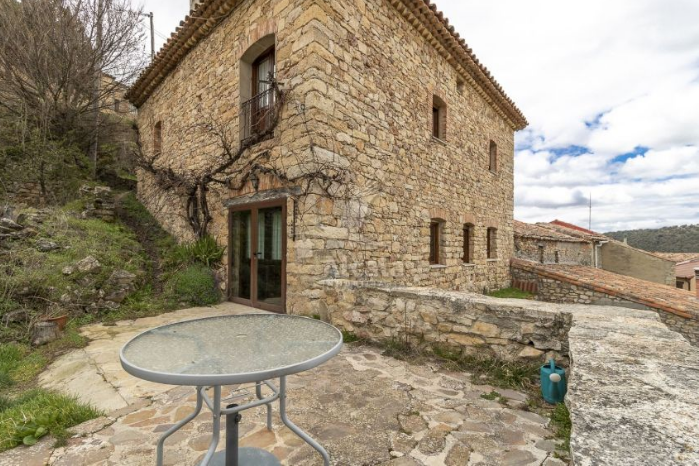
"Empty Spain" or "La España Vacía" is a trend that has caught the attention of the news in Spain in recent years, especially in light of the Coronavirus pandemic. This trend, as the name implies, involves looking to the emptier parts of the country for a home, for a variety of reasons. The outbreak of the health crisis and the confinements in particular have increased interest in buying homes in rural areas where you can enjoy the outdoors and have ample space inside your home to enjoy, even if you are in lockdown.
The Spanish Valuation Institute (Instituto de Valoraciones) recalls that "during the strict confinement some buyers prioritised the characteristics of the home over its location. Moving away from the usual urban environments and the desire to have larger homes with outdoor spaces became a widespread trend". However, this urgency that occurred during 2020 has been reducing with the passing of the months and the gradual return to normality. This is occurring to such an extent that, according to the appraiser, "it has meant that location has once again become a primary factor in the search for housing".
Even so, there is still interest in buying a house away from the large urban centres, either as a second home or as an investment opportunity.
In order to choose the right property, the Instituto de Valoraciones recommends taking into account several factors, such as the fact that banks tend to grant less financing for this type of operation and that the time it can take to search in these enclaves can take longer if the geographical area is not specified. They also advise comparing prices of different properties, as well as paying attention to the location.
Below, we review the factors to take into account before closing on the purchase of a property in rural Spain:
Be clear about the purpose of the purchase in order to choose the location.
The first key factor when analysing the transaction is to be clear about its purpose in order to choose the location that best suits the needs and circumstances. In other words, decide if it is going to be your main home, a second home or if you are viewing it as an investment.
If it is going to be your main residence, for example, it is important to assess whether there are schools, supermarkets and leisure options in the area, as well as good infrastructure and internet connections. If you are looking for a property as a second home in which to spend your free time, Instituto de Valoraciones states that "probably a good option are the municipalities with smaller populations, which also offer lower prices and opportunities in enclaves ideal for rest and disconnection".
The search time can be extended in time
Another factor to bear in mind, according to the appraiser, is that the search for a property can take a long time for several reasons. One of them is that the supply of housing is more limited than in larger cities.
It is also influenced by the fact that "generally the requirements and conditions that buyers are looking for in rural homes tend to be more specific, as they renounce the comforts of living in a city with all the services within reach, prioritising other factors such as the peace and quiet offered by living in a rural environment or the possibility of having larger indoor and outdoor spaces for private use. Therefore, the recommendation is to start the search at least a few months before the desired date of purchase, especially if you want to start enjoying the property in a specific period, such as next summer," says the company.
Financing, another possible stumbling block
Instituto de Valoraciones also reminds future buyers that they must be aware of the house they can afford to buy, for which in many cases bank financing will be essential. In the case of a second home, it should be borne in mind that banks tend to provide less financing than in the case of the purchase of a primary residence.
"When applying for a loan for a second home, buyers generally have to comply with stricter conditions and requirements than those necessary for a first home, given that, when granting financing for this type of home, financial institutions run a greater risk".
In this sense, it is worth bearing in mind that the loan repayment period is usually shorter than that of mortgages for first homes, the interest rates are usually higher and the percentage of financing is normally between 60% and 70% of the assessed value of the property or its purchase price, compared to the 80% that banks grant on average in the case of habitual residences. For this reason, the company stresses, "in order to qualify for this type of mortgage, buyers must have a very stable financial profile and have the necessary savings to cover the amount that mortgages do not cover (around 30-40%) plus the costs and taxes associated with the transaction. In addition, it is important to foresee the costs of refurbishment and/or maintenance that this type of property may entail".
Prices evolve more slowly
According to data from the Ministry of Transport, Mobility and Urban Agenda (Mitma), some provinces such as Zamora (Castilla y León), Teruel (Aragón), Ciudad Real (Castilla La Mancha) or Cáceres (Extremadura), key areas of rural Spain, have registered much lower year-on-year price variations than the average of their autonomous community in the second quarter of 2021, compared to the same period of the previous year.
For this reason, says the valuer, "when looking for housing in rural areas, it is recommended to analyse prices and their evolution in the different areas in order to take advantage of the best offers on the market".